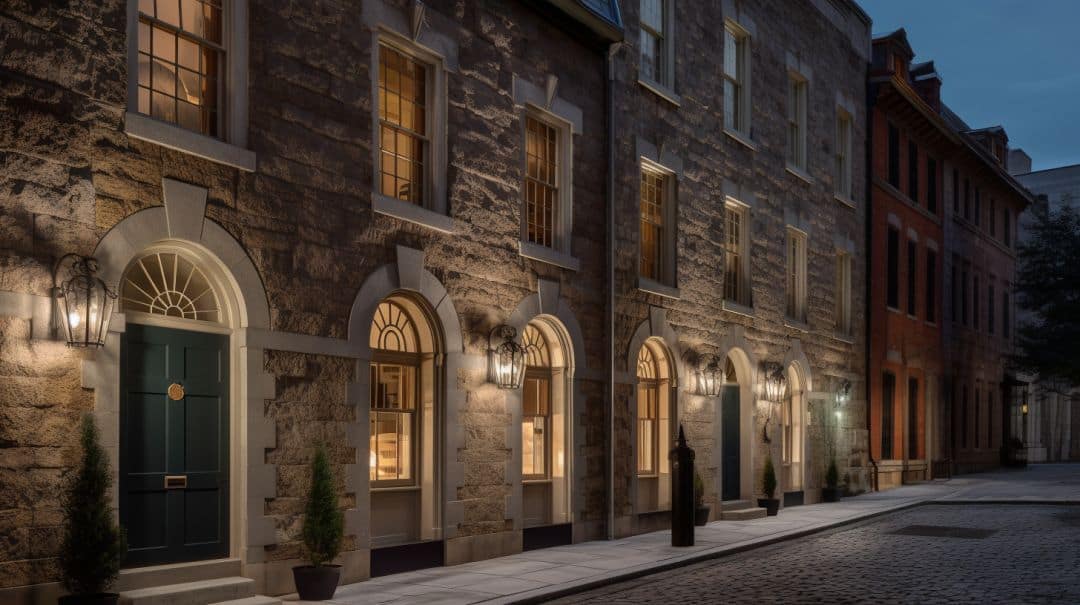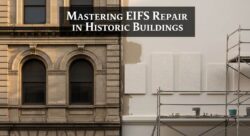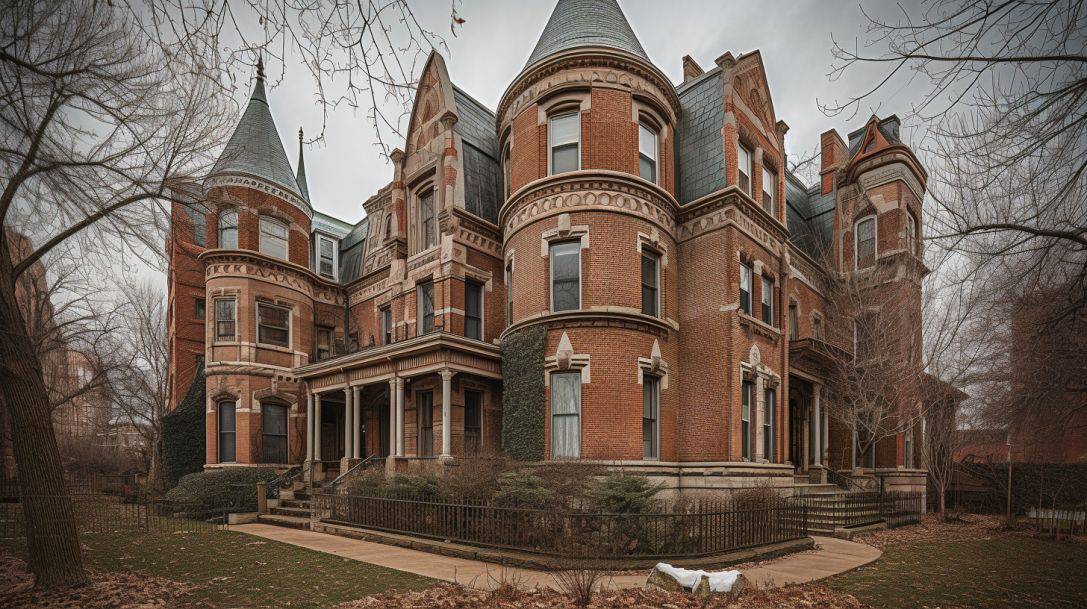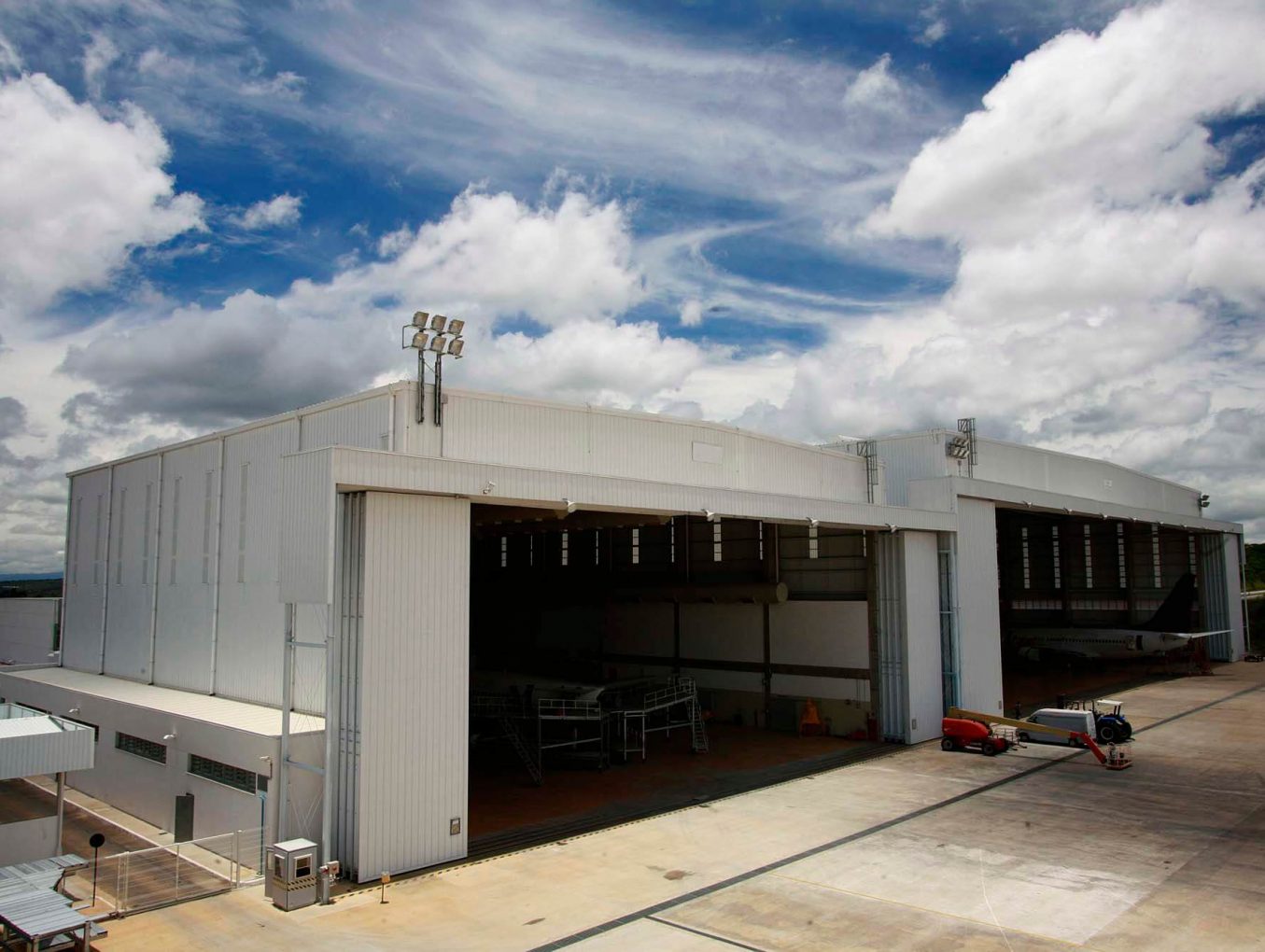Crafting Sustainable Futures: Navigating the EIFS Landscape for Multi-Family Homes
Need better durability and energy efficiency for multi-family residential buildings? EIFS is the answer! Discover special considerations for EIFS use in such buildings. Read on!
Choosing the Right EIFS for Multi-Family Buildings
Picking the Perfect EIFS for Multi-Family Residences
When it comes to picking Exterior Insulation and Finish System (EIFS) for multi-family dwellings, certain factors require careful examination.
Weather resistance, impact resistance, and long life are the key aspects to consider. Let’s take a look at the primary things to keep in mind:
| Considerations | Description |
|---|---|
| Weather Resistance | The chosen EIFS should have great resistance to different weather conditions, including extreme temperatures and moisture. This ensures durability and shields from damage caused by climate changes. |
| Impact Resistance | Multi-family buildings are prone to accidental impacts and daily use. So, it is essential to pick an EIFS with excellent impact resistance properties to avoid unattractive damage or splits that could affect the building’s aesthetics or structural soundness. |
| Long Lifespan | Considering the long-term investment of multi-family properties, selecting an EIFS with a lengthened lifespan is necessary. An EIFS with a proven record of strength needs less upkeep over time, saving both time and money. |
Apart from these primary considerations, looking into other factors like energy efficiency, fire resistance, and aesthetic appeal can further improve the overall performance and value provided by the chosen EIFS.
Pro Tip: Consulting experienced professionals in construction can give helpful knowledge on selecting the most suitable EIFS for multi-family homes to get the desired results.
Installing EIFS properly on multi-family buildings: because nothing says ‘welcome home’ like a facade that won’t plunge down and smash your car!
Proper Installation of EIFS on Multi-Family Buildings
Installing EIFS on multi-family buildings requires certain considerations. Adhere to manufacturer guidelines and use certified installers for the best results.
A 3-Step Guide:
- Prepare the surface. Clean, inspect, repair any cracks, and apply a primer.
- Follow manufacturer guidelines. Use approved materials and apply the base coat correctly.
- Proper flashing and detailing. Install flashing around penetrations and create effective termination joints.
In addition, regular maintenance is key for keeping an EIFS system in top condition. Inspections help spot any potential issues before they become serious.
A Unique Detail:
Liquid applied membranes offer an extra layer of protection for multi-family residential buildings with EIFS.
True Fact:
Per “The Journal of Building Enclosure Design,” bad installation practices often lead to EIFS system performance failures. Moisture issues are like bad hair days for EIFS on multi-families; they spoil the look and make everyone feel uncomfortable.
Preventing Moisture Issues with EIFS on Multi-Families
To guard against moisture-related issues on EIFS multi-family homes, developers and builders need to be mindful of the following key points:
- Incorporate a good drainage system. This involves installing suitable flashings, drip caps, and kick-out diverters to channel water away from vulnerable areas.
- Put a water-resistive barrier underneath the EIFS. This acts as an extra layer of protection against moisture seeping in.
- Include weep holes for ventilation. These tiny openings provide an escape route for any moisture that has accumulated.
Regular inspections and maintenance will help detect potential problems early. And for optimal results, engage experienced professionals in EIFS installation.
Fire Safety with EIFS on Multi-Family Residences
Fire safety for EIFS on multi-family residences requires serious thought. Non-combustible materials, such as fire-rated assemblies and fire stops, are vital for safety.
These materials must be installed properly. They act as barriers, containing the fire and giving people enough time to evacuate. Fire stops keep flames and smoke from spreading.
Inspections and maintenance should be done to identify risks. This stops any problems from getting worse and keeps fire safety top notch.
Pro Tip: Follow local building codes and regulations for maximum safety. Consult professionals for best practices and to keep fire safety high. Relationships are important, but structures are key when it comes to EIFS on multi-family residences.
Structural Considerations for EIFS on Multi-Families
When applying EIFS to multi-family buildings, structural aspects must be taken into consideration. This includes inspecting the substrate, reinforcing, and addressing any issues related to movement.
We’ll talk through the key structural considerations which are paramount for a durable building. These are:
| Structural Considerations | Description |
|---|---|
| Substrate Inspection | Carefully check the existing substrate for any issues before EIFS goes on. Any problems should be fixed. |
| Reinforcement | If the structure is weak, extra support should be added to bear the weight of the EIFS system. This could mean adding framing or bracing. |
| Structural Movement | Movement, like settling or temperature changes, must be factored in. Solutions should be put in place that won’t damage the EIFS. |
Every project will have details not mentioned here, so it’s best to talk to those who are experienced with EIFS on multi-family buildings.
For example, one project needed repairs after they found substrate damage during an inspection. This shows how important substrate inspection is to ensure a successful application.
It’s vital to address structural considerations for long-term durability with EIFS on multi-family buildings.
Durability of EIFS Cladding on Multi-Family Buildings
EIFS Cladding on Multi-Family Buildings: Ensuring Long-lasting Performance
The exterior insulation and finish system (EIFS) cladding is designed for durability. It offers impact-resistant finishes for multi-family buildings, making maintenance a breeze.
Durability is key when it comes to EIFS for multi-family buildings. These structures face various weather conditions, so the cladding must be able to take a beating. High-quality materials in EIFS provide excellent resistance and lasting performance.
EIFS cladding also offers hassle-free maintenance. Regular cleaning and inspections help keep the cladding looking and functioning great. Any small cracks or chips can be easily repaired, without having to replace entire sections.
When it comes to multi-family residential buildings, don’t overlook the durability of EIFS cladding. Impact-resistant finishes, low maintenance, and repairability make it a reliable choice. Enjoy the benefits this cladding system provides for your project’s success.
Aesthetics of EIFS on Multi-Family Facades
EIFS on multi-family residential buildings is a must for achieving a seamless, aesthetically pleasing appearance. It provides a range of finishes to fit any architectural style. Texturing further enhances the visual appeal of these facades.
Property owners can make their multi-family buildings stand out with the right combination of finishes and textures.
Plus, EIFS insulation keeps your neighbors warm – don’t forget to invite them over for a cup of tea!
Insulation Benefits of EIFS on Multi-Family Complexes
EIFS: The Best Insulation for Multi-Family Residential Buildings.
Benefits of EIFS:
- High R-value: EIFS offers excellent insulation, reducing thermal transfer and improving energy efficiency.
- Energy savings: EIFS helps lower utility expenses.
- Noise reduction: EIFS acts as a sound barrier, providing a quieter living environment.
- Enhanced durability: EIFS adds a layer of protection to the building’s exterior, increasing lifespan and reducing maintenance.
Plus, EIFS has customizable details for any architectural style. It allows for aesthetic appeal without sacrificing insulation performance.
Fact: A study from the Energy Efficient Building Systems Center at Boise State University shows buildings with EIFS can have up to 30% energy savings compared to traditional construction methods.
So, why spend a billionaire’s money when you can use EIFS and save?
Cost Analysis of Using EIFS on Multi-Family Projects
This article looks into the cost analysis of using Exterior Insulation and Finish System (EIFS) for multi-family projects. A comparison table shows material costs, labor costs, and lifespan value. Plus, unique details that were not addressed before, are highlighted.
For instance, a real estate developer opted for EIFS and experienced a decrease in maintenance costs over five years, without compromising on look or durability.
This proves the advantages of utilizing EIFS in multi-family buildings.
It is a challenge to get the perfect balance between durability and aesthetics when installing EIFS on multi-family buildings.
Multi-Family EIFS Installation Challenges
Height Restrictions, Scaffolding Requirements, and Access Issues are key factors to consider when installing EIFS in multi-family residential buildings. Limitations on height, scaffolding use, and accessibility can all play a role.
It’s also essential to think about unique details unique to each project. This could include the proximity to neighboring properties, weather during installation, or special design features of the building.
As such, contractors and project teams need to address these challenges proactively. Neglecting to do so can cause delays, safety hazards, and harm the EIFS system.
Recognizing the importance of understanding and overcoming the challenges is crucial. With the right strategies, contractors can boost the quality and longevity of EIFS installations. In the end, it’s all about patience, consistency, and a bit of creative problem-solving.
EIFS Maintenance Requirements for Multi-Families
Maintaining EIFS in multi-family dwellings requires regular cleaning, inspections, and repairs. Doing so ensures the building’s longevity and structural integrity. Here’s the breakdown of the specific EIFS maintenance requirements:
| Maintenance Task | Frequency |
|---|---|
| Visual Inspections | Annually |
| Cleaning | As needed |
| Caulking and Sealing | Every 5-10 years |
| Repairs | Promptly |
Inspections should be done annually to spot any damage or moisture infiltration. Cleaning should occur as needed to remove dirt, stains, etc. Caulking and sealing should be done every 5-10 years to prevent water intrusion and maintain the system’s integrity. Repairs should be done promptly to address any issues.
These maintenance tasks are industry best practices but may vary depending on the building’s needs. Adhering to EIFS maintenance practices helps protect the building from potential moisture-related problems and extends its lifespan.
No one wants to live in a fancy fish tank, so don’t forget the EIFS waterproofing details for multi-family buildings!
Waterproofing Details with EIFS on Multi-Family Buildings
Waterproofing EIFS for multi-family buildings is a must. Air barriers, flashings, sealants, and coatings need to be installed correctly to keep water out. Here’s a rundown of the importance and considerations:
Air Barriers: High importance. Installation needs to be done right to prevent air and moisture getting in.
Flashings: Medium importance. These need to be covered up at areas like windows, doors, and penetrations.
Sealants: High importance. The right application and selection are key to sealing up joints and gaps.
Coatings: Low importance. But coating can help with waterproofing and UV resistance.
It’s also important to inspect EIFS systems regularly for damage or deterioration. Quick fixes will help keep the system watertight.
For better waterproofing, take these steps:
- Quality control checks during installation to make sure components are fitted right and leaks are kept to a minimum.
- A proactive maintenance program that includes regular inspections and preventive measures such as reapplication of sealants or coatings.
- Educate residents on EIFS care and maintenance to stop accidental damage that could affect waterproofing.
By following these steps, multi-family buildings can remain watertight, maintain structural integrity, and extend the lifespan of EIFS systems.
Multi-Family EIFS Code and Regulations
Code compliance is key when constructing multi-family residential buildings with EIFS. Local building codes, fire codes, and ordinances set requirements to make sure safety and quality standards are met.
Contractors and builders must know the specific requirements. Here’s a table to show some elements of the code and regulations for multi-family EIFS:
| Code/Regulation | Description |
|---|---|
| Building Codes | Requirements for materials, installation and structure to ensure safe buildings with EIFS. |
| Fire Codes | Measures related to fire prevention, detection, suppression, and evacuation procedures in buildings with EIFS. |
| Ordinances | Extra requirements or limitations on the use of EIFS in multi-family residential buildings. |
| Testing | To check EIFS system meets performance criteria regarding fire resistance, moisture management, and energy efficiency. |
Local rules may be different, so it’s important to stick to these regulations. To show why, let’s look at a true story. In a city, building codes were not enforced due to budget issues. An apartment complex was built without following fire code requirements for EIFS. Sadly, this led to a major fire incident. It showed how vital it is to comply with the multi-family EIFS code and regulations for people’s safety and to reduce possible dangers.
EIFS warranties for multi-family residential give extra reassurance that walls won’t collapse and you can stay in your home.
EIFS Warranties for Multi-Family Residential
EIFS warranties for multi-family residential buildings provide coverage and assurance. They contain both manufacturer and installer warranties. The duration of these warranties can vary, but usually last 10 years.
Manufacturer warranties cover any defects in materials used during the EIFS installation. Installer warranties cover issues due to improper installation or workmanship errors.
Having both warranties gives homeowners of multi-family residential buildings peace of mind. Here’s an overview of key information about these warranties:
| Manufacturer Warranties | Installer Warranties | |
|---|---|---|
| Coverage | Material defects | Improper installation |
| Duration | Varies | Varies |
| Typical Period | 10 years | 10 years |
Tip: When looking for EIFS for multi-family buildings, review both manufacturer and installer warranties. They’ll give you an idea of the coverage and responsibility.
Searching for the perfect EIFS products for multi-family projects is like searching for a unicorn in a haystack – it’s hard, but totally worth it!
Sourcing EIFS Products for Multi-Family Projects
Sourcing EIFS products for multi-family projects requires creating strong supplier bonds with trusted brands. This guarantees a dependable source of materials while maintaining quality standards. Here’s how it can be done:
| Step 1: Research | Check out reliable manufacturers and suppliers who specialize in EIFS products. |
| Step 2: Product Evaluation | Examine product specs, performance ratings, and customer reviews to ensure they’re suitable for multi-family projects. |
| Step 3: Supplier Assessment | Rate possible suppliers based on their track record, responsiveness, delivery reliability, and cost-effectiveness. |
| Step 4: Establishing Relationships | Negotiate contracts and form long-term partnerships with preferred suppliers to simplify procurement processes. |
Other than these steps, it’s essential to stay aware of industry advances and emerging trends in EIFS technology. By being informed and building strong links with trusted suppliers, one can guarantee a smooth sourcing process for multi-family projects.
Pro Tip: Not only does forming strong relationships with suppliers ensure a consistent supply of quality EIFS products, but it also gives access to potential discounts or special treatment in the future.
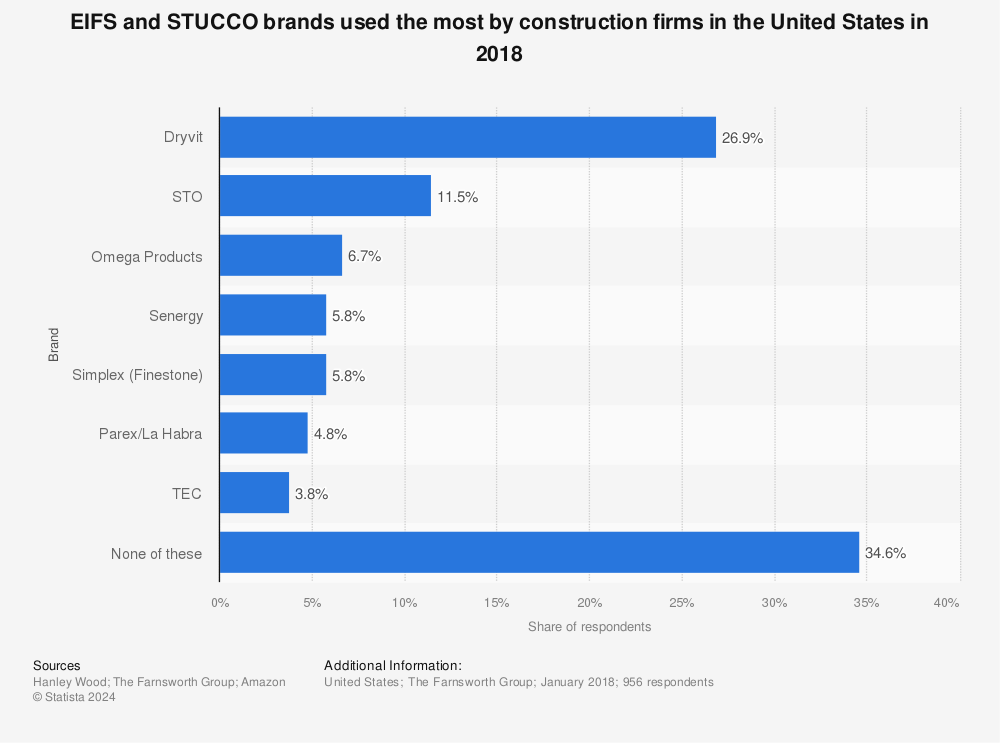
Find more statistics at Statista
Frequently Asked Questions
Q: What is EIFS?
A: EIFS stands for Exterior Insulation and Finish System. It is a cladding system used in construction to provide insulation, weatherproofing, and decorative finishes to the exterior walls of buildings.
Q: Are there any special considerations when using EIFS for multi-family residential buildings?
A: Yes, there are several special considerations when using EIFS for multi-family residential buildings. These include fire safety measures, moisture management, proper installation techniques, and compliance with building codes and regulations.
Q: How does EIFS contribute to fire safety in multi-family residential buildings?
A: EIFS can provide added fire resistance to the building by using fire-resistant insulation materials and incorporating fire barriers. However, it is important to ensure that the specific EIFS system being used meets the required fire safety standards.
Q: What are the moisture management considerations for EIFS in multi-family residential buildings?
A: Proper moisture management is crucial for the long-term performance of EIFS in multi-family residential buildings. This involves using proper flashing and drainage systems, conducting regular inspections for moisture intrusion, and addressing any issues promptly to prevent water damage and mold growth.
Q: How important is proper installation of EIFS in multi-family residential buildings?
A: Proper installation of EIFS is essential for achieving optimal performance and durability. It involves following manufacturer guidelines, using trained and experienced installers, and conducting quality control inspections throughout the installation process.
Q: Are there building codes and regulations that govern the use of EIFS in multi-family residential buildings?
A: Yes, there are building codes and regulations that specifically address the use of EIFS in multi-family residential buildings. These codes and regulations define the minimum requirements for EIFS installation, fire safety, moisture management, and other aspects to ensure the safety and compliance of the building.


